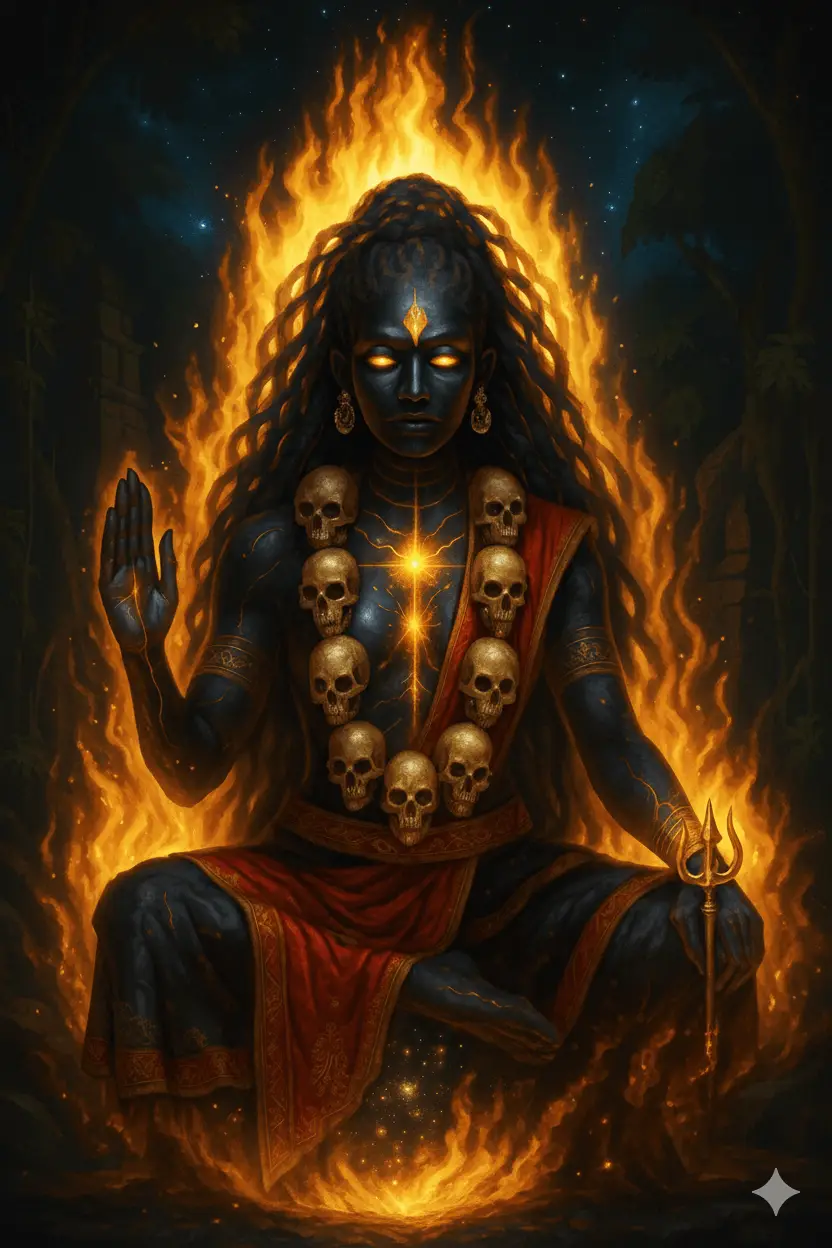If you've ever wondered about the goddess whose name graces one of the world's most sacred rivers, you're in for a beautiful journey. Ganga Maa, literally "Mother Ganga": is one of Hinduism's most beloved deities, embodying the divine feminine as the goddess of the Ganges River. But she's so much more than just a river goddess. She's a symbol of purification, liberation, and unconditional maternal love that flows through both the physical and spiritual worlds.
For anyone stepping into tantric practice or Hindu spirituality, understanding Ganga Maa opens doorways to deeper concepts of flow, surrender, and the sacred feminine. Let's dive into her story, significance, and how she continues to guide seekers today.
The River Goddess: More Than Water
Ganga Maa represents something profound in Hindu cosmology: the idea that divinity flows through everything, quite literally. She's the personification of the Ganges River, but calling her "just" a river goddess misses the point entirely. In Hindu understanding, she's a living goddess whose physical form is the 1,680-mile river flowing from the Himalayan glaciers to the Bay of Bengal.
Think of it this way: while many cultures see rivers as resources or geographical features, Hindu tradition sees Ganga as a conscious, loving mother who chose to incarnate as flowing water to serve humanity. She's not just in the river: she IS the river, and every drop carries her divine essence.
This concept might seem foreign if you're used to more abstract spiritual ideas, but it's actually quite tantric in nature. Tantra teaches us that the divine isn't separate from the physical world but intimately woven through it. Ganga Maa embodies this perfectly: she's spirit made manifest in the most essential element for life: water.
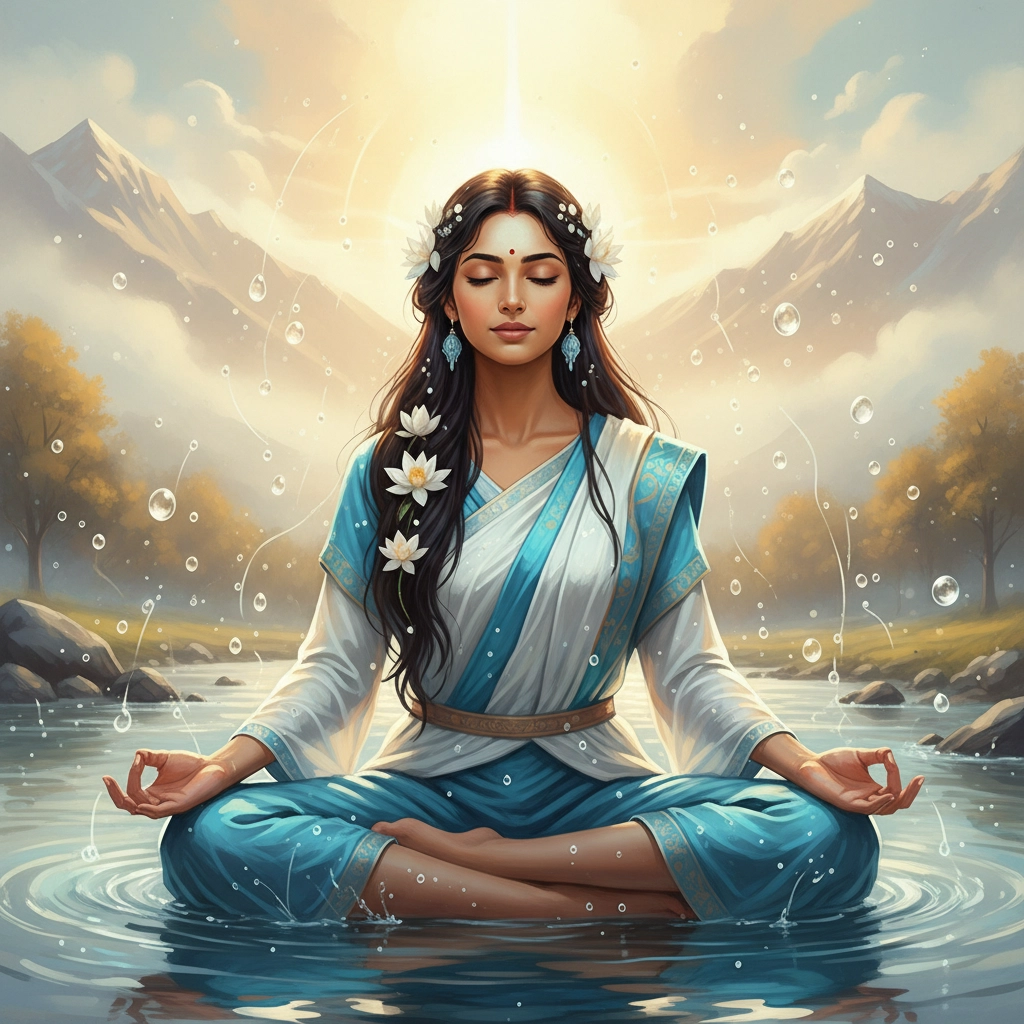
The Origin Stories: Where Goddesses Come From
Like many Hindu deities, Ganga Maa has multiple origin stories, each revealing different aspects of her nature. These aren't contradictions: they're different lenses for understanding her multifaceted essence.
One account describes her as emerging from Brahma's kamandala (a sacred water vessel) when he was washing the feet of Vamana, an incarnation of Vishnu. Picture the cosmic creator himself washing the feet of another divine aspect, and from that act of devotion, Ganga is born. It's a beautiful image of service creating divinity.
Another story makes her the daughter of Himavat (the personified Himalayas) and Queen Menaka, making her the sister of Parvati, Shiva's beloved consort. This version emphasizes her connection to the mountains and her family ties to other major deities.
The Vishnu Purana offers yet another perspective: Ganga formed from the sweat of Lord Vishnu's feet. While this might sound odd to Western ears, in Hindu symbolism, the feet of the divine represent the foundation of creation: so Ganga emerges from the very basis of existence itself.
What's beautiful is that all these stories point to the same truth: Ganga Maa comes from the highest divine sources, whether through cosmic creation, mountain majesty, or the foundational aspects of the divine.
The Great Descent: Love That Moves Mountains
The most famous story about Ganga Maa is her descent from the heavens to Earth, and it's a tale that perfectly captures her compassionate nature. This isn't just mythology: it's a teaching story about dedication, sacrifice, and divine intervention.
The story begins with King Sagara, whose 60,000 sons were turned to ash by the sage Kapila's spiritual fire. Their souls couldn't find peace until their ashes were touched by Ganga's sacred waters. The problem? Ganga lived in the heavens, not on Earth.
Enter Bhagiratha, Sagara's descendant, who took on an impossible task. For thousands of years, he performed intense spiritual practices (tapas) to convince Ganga to descend to Earth. When she finally agreed, a new problem arose: her celestial waters would be too powerful for Earth to contain. The force of her descent would destroy the planet.
This is where Shiva steps in, offering his tangled hair (jata) to catch Ganga's fall and release her gently onto Earth. The image is stunning: the great destroyer-transformer god becoming a gentle filter for divine grace. For this act, Shiva earned the name "Gangaadhara," meaning "bearer of Ganga."
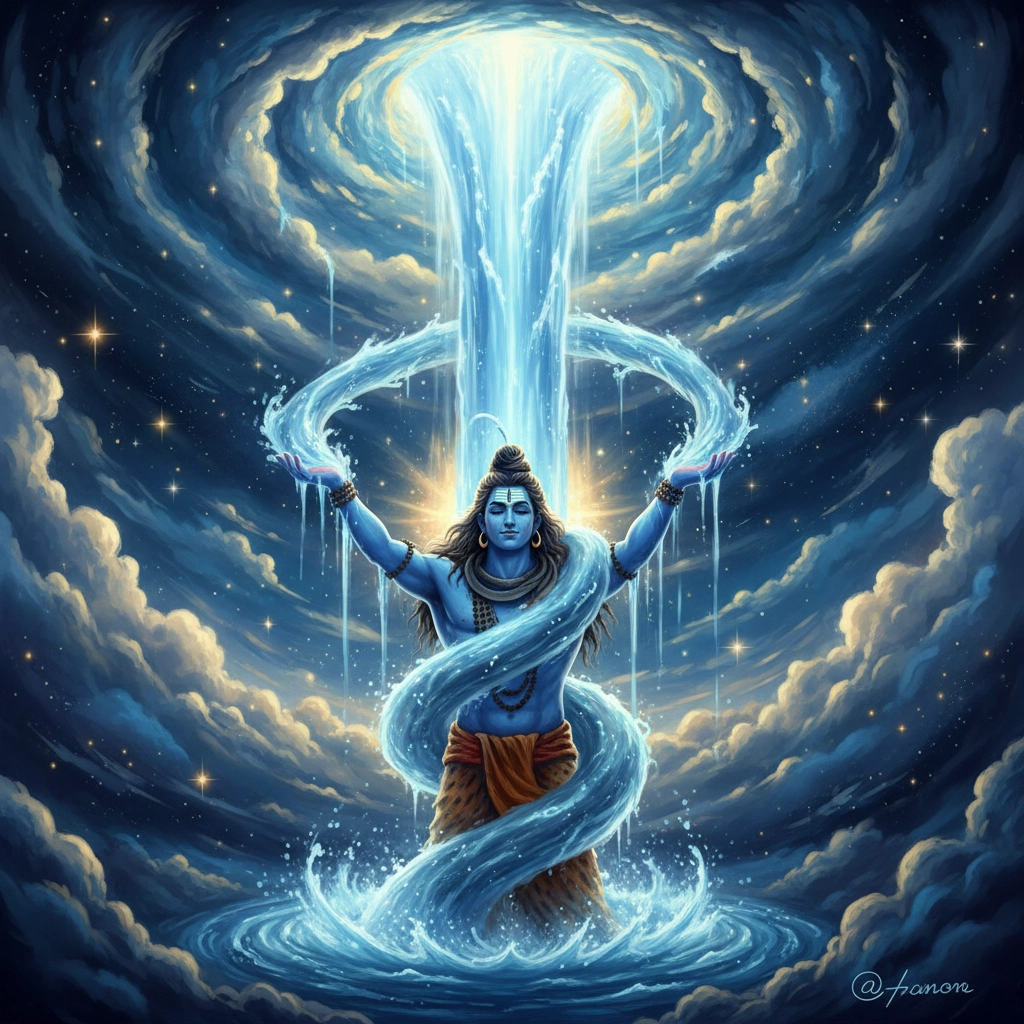
This story teaches us about the tantric principle of channeling intense spiritual energy through proper preparation and divine guidance. Just as Ganga needed Shiva's hair to safely reach Earth, our spiritual experiences often need proper grounding and wise guidance.
Sacred Iconography: How to Recognize the Divine Mother
When you see depictions of Ganga Maa, she's typically shown as a luminous, fair-skinned woman with flowing hair, often adorned with lotus flowers. She rides a makara: a crocodile-like creature that represents the primal waters of creation. Sometimes she's shown with two arms, sometimes four, holding objects like water lilies, a water pot, or a rosary.
Her white crown symbolizes purity, while her serene expression radiates the unconditional love of a divine mother. The makara isn't just her vehicle: it represents her mastery over the unconscious, primordial forces of creation. In tantric symbolism, water creatures often represent our deepest psychological and spiritual currents.
What's particularly meaningful is how she's almost always depicted in motion: flowing, riding, moving. This reflects the tantric understanding that the divine feminine (Shakti) is dynamic, creative energy in constant flow.
Purification and Liberation: The Spiritual Power of Flow
Here's where Ganga Maa's significance becomes deeply personal for spiritual seekers. She's revered as the goddess who washes away karma: not just surface-level mistakes, but the deep psychic impressions that keep us stuck in limiting patterns.
In Hindu tradition, bathing in the Ganges is said to cleanse even the gravest spiritual impurities. Pilgrims travel thousands of miles just to immerse themselves in her waters, believing that physical contact with the river creates spiritual transformation. The dying come to her banks, hoping to leave their bodies in her presence for a better transition to whatever comes next.
But you don't need to physically travel to India to work with Ganga Maa's purifying energy. In tantric practice, we understand that all water carries her essence: your shower, a natural spring, even a bowl of water on your altar can become a doorway to her transformative power.
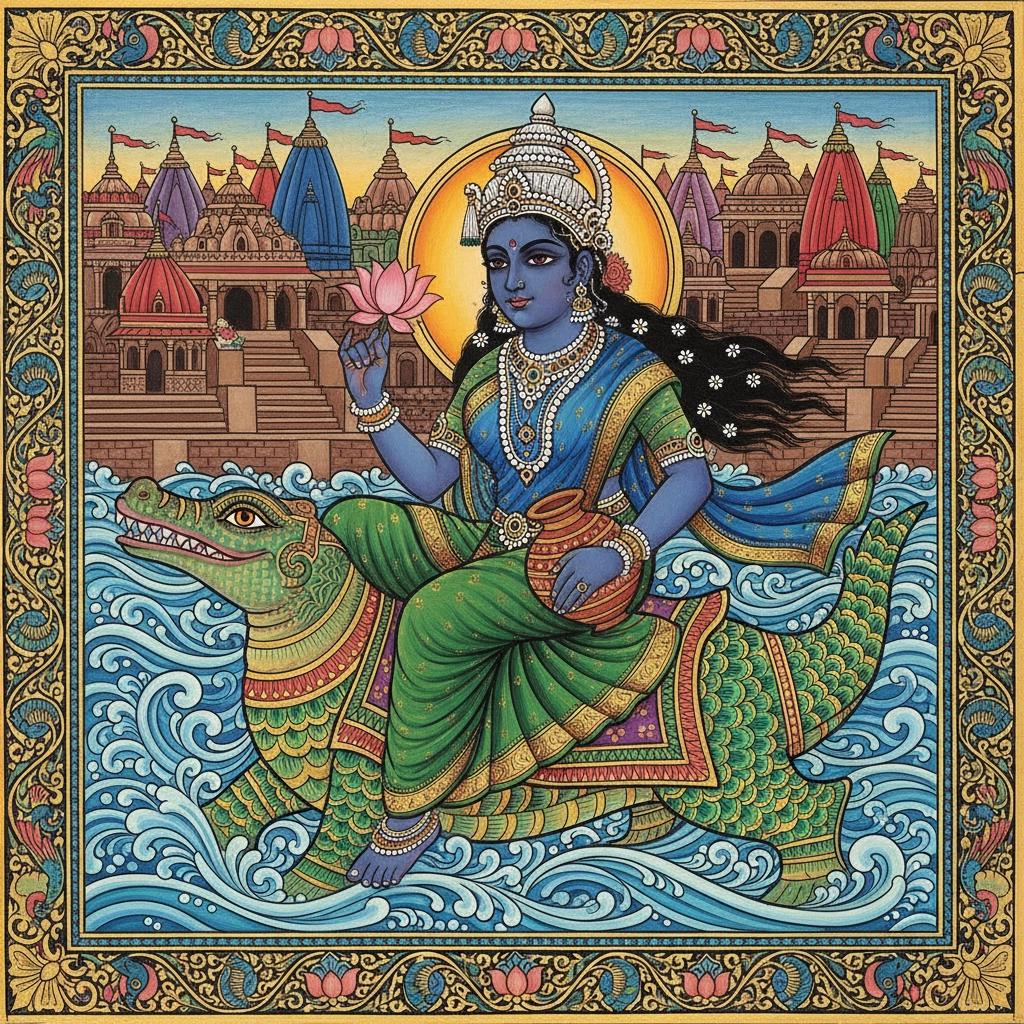
The key is approaching water with the understanding that you're connecting with a living, loving goddess who wants to help you release what no longer serves your highest good. This isn't about magical thinking: it's about opening to the psychological and spiritual cleansing that comes from conscious ritual and devotion.
Ganga Maa in Tantric Practice
Within tantric traditions, Ganga Maa represents several important principles. First, she embodies the flowing aspect of Shakti: the divine feminine energy that's constantly moving, creating, and transforming. Unlike static forms of the divine, she teaches us about surrender to life's natural currents.
She's also connected to the vishuddha (throat chakra), governing communication, truth, and purification. When tantric practitioners work with throat chakra healing, they often invoke Ganga Maa's energy to help release stuck emotions, clear communication blocks, and speak their authentic truth.
In more advanced practices, she's associated with the flow of kundalini energy up the spine. Just as she descended from heaven to Earth through Shiva's hair, kundalini energy rises from the base of the spine to the crown, often requiring divine grace and proper guidance to move safely.
Some tantric rituals involve offering flowers, prayers, or sacred substances to bodies of water while focusing on Ganga Maa, creating a bridge between physical and spiritual purification.
Connecting with Ganga Maa Today
You don't need to be Hindu or follow any particular religious path to appreciate Ganga Maa's teachings. Her core message: that divine love flows constantly, seeking to purify and liberate: transcends religious boundaries.
Simple ways to connect with her energy include:
Water meditation: Sit by any body of water and contemplate its flowing nature. Feel how it never holds onto anything, always moving toward union with something larger.
Purification baths: Add sea salt, flower petals, or essential oils to your bath while setting intentions to release what's no longer needed in your life.
Flow practices: Engage in activities that cultivate flow states: dancing, swimming, yoga, or creative expression: while dedicating the practice to releasing stagnation.
Environmental care: Since Ganga Maa is literally embodied in water systems, caring for water sources becomes a form of devotional practice.
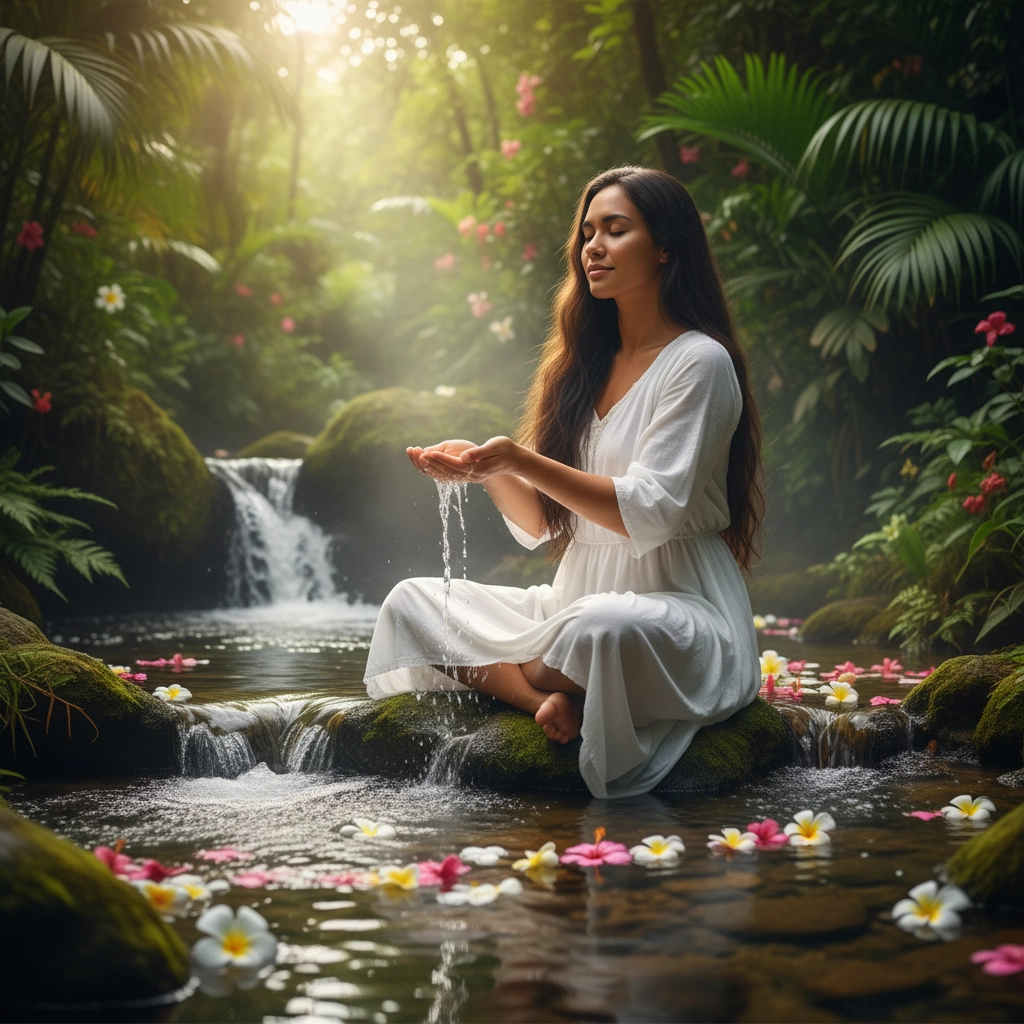
The Mother Who Never Stops Giving
What makes Ganga Maa so compelling for modern spiritual seekers is her perfect balance of power and compassion. She's strong enough to carve canyons and move mountains, yet gentle enough to cradle dying souls and wash newborn babies. She represents the divine feminine not as passive receptivity, but as active, flowing love that transforms everything it touches.
In our fast-paced world where we often resist change and cling to security, Ganga Maa teaches us about the beauty of surrender: not as defeat, but as conscious participation in life's natural flow. She shows us that true purification isn't about becoming perfect, but about releasing our death grip on what's already passing away.
Whether you approach her as a Hindu goddess, an archetypal energy, or simply as inspiration for living more fluidly, Ganga Maa offers a beautiful model for navigating life's constant changes with grace, compassion, and trust in the larger flow of existence.
Her river continues to flow, carrying prayers, hopes, and offerings toward the vastness of the ocean: just as our individual spiritual journeys eventually merge with something infinitely larger than ourselves.
